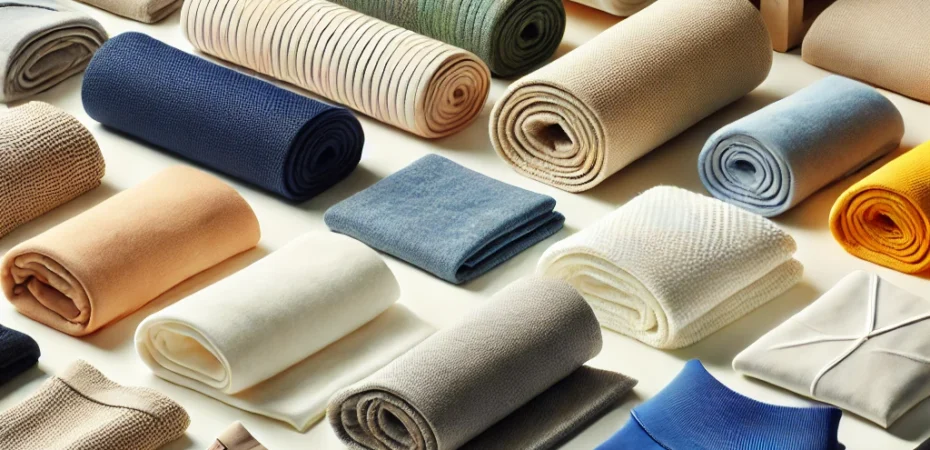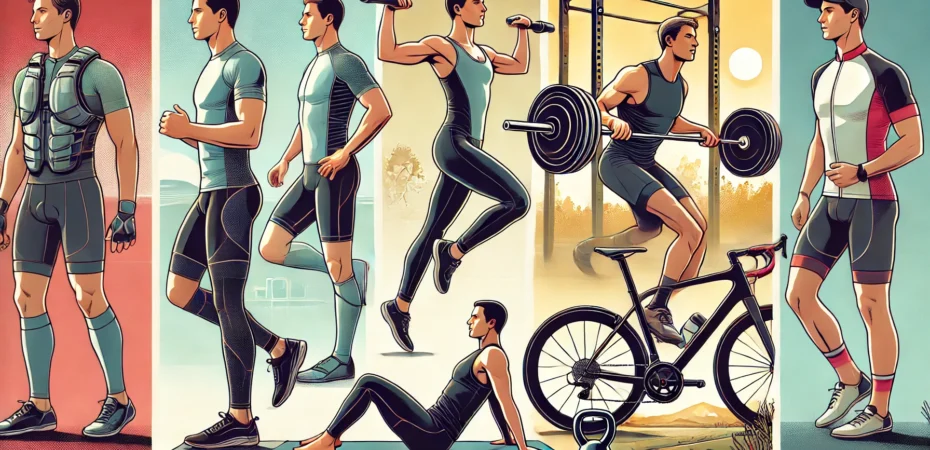The Best Fabrics for Activewear: Comfort vs. Performance
5 months ago fashiontrendsworld Comments Off on The Best Fabrics for Activewear: Comfort vs. Performance
Introduction: The Balancing Act Between Comfort and Performance
When it comes to activewear, the delicate balance between comfort and performance is key. The right fabric can make or break a workout, influencing both how you feel during physical activity and how well your body performs. For athletes and fitness enthusiasts alike, choosing activewear that supports endurance while ensuring comfort is paramount. This article takes you through some of the best fabrics for activewear, weighing comfort against performance to guide your decision-making about the garments you will buy.
Knowing the Role of Fabric in Activewear
Fabrics used in activewear must serve a dual purpose: to ensure comfort during long hours of wear and to enhance performance during high-intensity workouts. While comfort is often the first priority for day-to-day wear, performance fabrics are engineered to withstand rigorous movements, sweat, and extreme conditions. Each fabric has unique characteristics that cater to different needs. Understanding these properties is crucial when selecting activewear that aligns with your specific fitness goals.
Best Comfort Fabrics in Activewear
Cotton
Soft and breathable cotton is the reason why people have been choosing comfort in activewear. It does not irritate the skin much and provides an excellent airflow which is needed while doing yoga, casual walks, or other average physical activities. Nevertheless, cotton gets wet easily. This makes a person uncomfortable if he or she is exercising too hard or continues for a longer period of time. While ideal for low-intensity activities, cotton can leave you feeling heavy and damp if worn during high-performance exercises.
Bamboo
Bamboo fabric has quickly made its way to the world of activewear due to its incredible softness, moisture-wicking property, and eco-friendly nature. It is naturally antibacterial, preventing any odors from lingering after strong training. The fabric is also highly breathable to keep the body cool during modestly low-intensity workouts. Its elasticity moves well with the body, making it an ideal option for rest days and extremely light workouts.
Modal
Modal is another natural fabric that has its origin from beechwood pulp. This material is known for its luxurious softness and smooth texture. It absorbs a lot of moisture, thus ideal for average activity levels. Like bamboo, modal’s breathability will keep it feeling comfortable even in prolonged use. While it’s very soft and comfortable, however, modal doesn’t have the durability and moisture-wicking properties of synthetic materials, which makes it not the best for more intense workouts.
Performance Fabrics: Built for Intensity
Polyester
For several decades, the world of high-performance activewear has depended upon polyester. Not only is polyester amazingly durable and resistant to shrinkage, but its shape will still hold even through multiple wash cycles. It also is hydrophobic, preventing water from sticking to the fibers, thus giving it great sweat-wicking and preventing moisture-soaked fibers in the fabric itself. This fabric dries fast, and its integrity is well maintained even when subjected to severe workouts. Runners, cyclists, and other athletes who are involved in high-impact sports find this very suitable.
Nylon
This is a synthetic fabric that exhibits strength and resistance to abrasion. It is very light, elastic, and has excellent compression properties, thereby helping to provide muscle support in intense physical activity. With its moisture-wicking functions, nylon ensures that the skin remains dry and won’t cause chafing or discomfort in longer exercises. Although it doesn’t breathe well like cotton or bamboo, keeping a shape and allowing flexibility, makes nylon highly preferred in the apparel of athletes, sports persons doing agile activities, and quick movements.
Spandex
\Spandex, often called Lycra, is the word synonymous with flexibility and stretch, hence a must-have fabric for activewear. With a high level of elasticity, spandex will let the garment stretch up to five times its original size, giving the wearer full freedom of movement during even the most demanding exercise. It is great at compressing muscles, thus taking fatigues away and therefore contributing to top performance. Additionally, moisture-wicking features contribute to comfort as sweat is pulled from the skin in high-performance activities. Spandex, though, does not breathe as well as cotton or bamboo and therefore causes discomfort especially when very warm weather is involved.
Sustainable Activewear Fabrics: Comfort Meets Performance
Eco-friendly fashion is increasingly in demand lately. This development has seen sustainable fabrics popping up in activewear. These sustainable activewear fabrics are recycled polyester, organic cotton, and hemp. They combine comfort and performance in an environment-friendly manner. These materials have similar moisture-wicking and durability features to traditional synthetic fabrics but with the added benefit of being environmentally friendly. Overall, choosing activewear made from sustainable fabrics guarantees that performance and the planet are equally paramount, so the conscious consumer will love it.
Choosing the Best Fabric Based on Your Workout Routine
The actual right choice for your sportswear depends on the activities you are going to engage in. Soft, breathable fabrics like cotton, bamboo, or modal would be ideal for low-intensity activities such as yoga or pilates. In high-performance workouts such as running, cycling, or strength training, synthetic fabrics like polyester, nylon, and spandex offer superior moisture-wicking properties, durability, and support. For those who want a combination of comfort and performance, adding sustainable fabrics such as recycled polyester or organic cotton to your activewear wardrobe is a balance of functionality and eco-consciousness.
Conclusion: The Future of Activewear Fabrics
The future of activewear fabrics lies in continued innovation and sustainability. New materials will lead to new and innovative ways that comfort can marry performance in athletic and fitness attire, where users can achieve all their potential performance while remaining comfortable and environmentally aware. The greatest fabrics for activity wear will vary from one use to another-whether you are talking about breathability, moisture wicking, or stretchability. As the call for performance-oriented but comfortable activewear increases, fabric technology that powers these apparel products will further change, allowing all types of athletes to face an increasingly dynamic and comfortable future.





